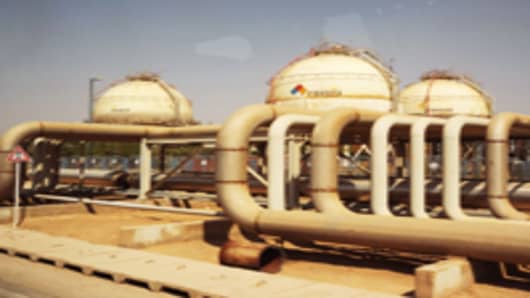Sanctions against Iran have been ramped up following the International Atomic Energy Agency report in November that suggested Iran’s nuclear program was military in nature, a claim denied by Iran.
Iran was exporting about 2.2 million barrels a day into the world market, and its biggest importer had been China, importing 500,000 barrels a day. Europe was importing 800,000 barrels a day. But a Reuters survey reported Monday that Asia’s imports of crude from West Africa are at record highs this quarter, as China imported less Iranian crude.
Trevor Houser, a partner with The Rhodium Group, said the sanctions may not put that much pressure on the oil prices until they impact directly on oil-related activity in the summer months. “The base case scenario is for no significant price spikes but there’s considerable tail risk,” he said.
Some of those risks for instance, are that the sanctions are too successful and create political instability in Iran. Another is that there is some military response. U.S. officials have acknowledged that Israel is considering military actionagainst Iran, and President Obama, in an interview Sunday, said that Israel has a right to be concerned about Iran’s nuclear efforts, but he does not think it has made a decision about military action.
Iran has threatened to close the Strait of Hormuz, which is a key waterway for transporting nearly 20 percent of the world’s oil supply. U.S. officials have said that would not be allowed. Traders say if any significant military action erupts, oil will shoot higher, to $150 or more.
“Our money is on the implementation of the scenario in a way that does not reduce a meaningful amount of crude on the market,” said Houser. He said as Iran’s customers turn away, Saudi Arabia could increase its output and China, not participating in an embargo, could increase its purchases, to make up for the imbalances of Iran’s exports.
“It’s not because China is trying to comply with U.S. sanctions, but given how much pressure there is on Iran as a producer, Chinese traders are looking for preferential terms to continue buying Iranian crude,” he said.
Houser said Iran may also already be feeling some impact as it appears that Japan and Korea voluntarily cut back on imports, and India has managed to force Iran to take payment for some crude in rupees, which also favors it as an exporter into Iran.
Another factor affecting oil prices is the increasing production from U.S. “tight oil” producers, tapping places like the Bakken in North Dakota. There is also a ramping up of production from the Canadian tar sands.
“Basically, there’s a lot of domestic crude sloshing around in the Midwest, which doesn’t have ready access to refinery capacity,” Armstrong said, as he pointed to a news story on the increasing discount between Bakken crude, produced in North Dakota, and WTI.
CERA IHS chairman Daniel Yerginsaid the amount of crude the U.S. is importing has fallen to 45 percent from 57 percent in 2008, in large part due to “tight oil” production as well as the natural gas hydraulic fracturing production, which has also resulted in natural gas liquids.
He said the Saudi Arabia is one country that has the levers to change its oil production to help satisfy global supply. “This is very complex. What you don’t want is a spike in oil prices that would affect the economic recovery or send gasoline up to $4 a gallon. But the very fact that the U.S. and Europe are moving forward with the embargo and sanctions shows how seriously they take the risk of an Iranian nuclear program,” said Yergin.
Houser said he believes the “Iran premium” in oil is actually less than $10 a barrel, and he sees a different factor that could be a risk for oil prices. “I think we’re more likely to see a movement up in oil prices on demand fundamentals in Europe and China surprising on the upside rather than a supply disruption in the Middle East,” he said.
Questions? Comments? Email us at marketinsider@cnbc.com



